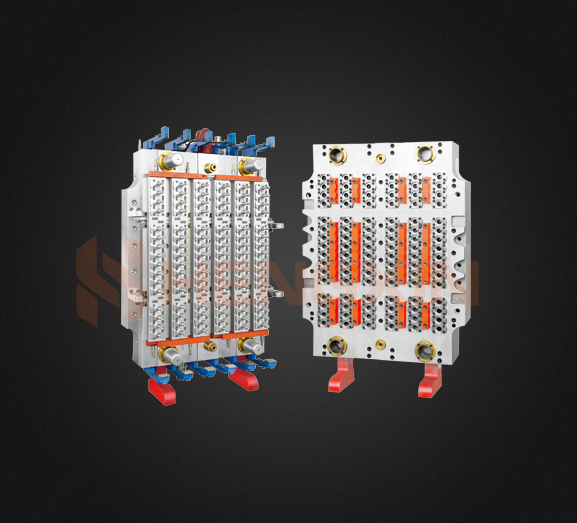The advent of the advanced plastics moulding technology brought about great improvement in this ancient art and converted it to a science. Mass manufacture of plastic moulds was initiated, and now PET preform moulding machines are available, which are capable of producing various kinds of preforms. Now they are used for different purposes, such as making soda bottles, parts for automobiles, etc. This process is much easier than the earlier process, in terms of size and production. Many people consider the creation of plastic moulds as a serious business, because there are many different advantages associated with the process.
One of the main advantages of using preform moulds is the speed of cooling. Now preformed bottles can be cooled in less than five minutes. During the manufacturing of any kind of bottles, liquid runs over a great length of pipe. This liquid can even heat up, if some of the pipes are not properly cooled down during the manufacturing process. If the cooling process is delayed, the pet bottles may not be able to reach their proper shape, therefore, you will have to make changes in the shape of the bottles, if you want them to reach their perfect shape.
Today, manufacturers use a number of tools, such as a thermostat for controlling the temperature, air blower for creating suction and convection bubbles, air pump for creating high-pressure air, etc. All of these tools help in faster cooling, thus reducing the time taken for manufacturing the different kinds of preform moulds. Moreover, because of these tools, manufacturers can produce large volumes of plastic, without waiting for the moulds to cool down completely. Another important advantage of using preform moulds is that it is much easier to manufacture various shapes of bottles, compared to manually using a form tool.

In order to reduce the manufacturing cycle times, most of the mould manufacturing companies follow the hot runner preform mould cycle time cycle, which has a considerable impact on the mould development time. The cycle time, in this case, refers to the length of time the mould is being heated up. Once the hot runner mould is heated up, it goes on to set, i.e., it moulds the preform, while simultaneously cooling down the mould. In the present scenario, heating and cooling of the preform are carried out with the help of electric fans, so as to speed up the cooling process along with cooling the mould.
On the other hand, the cold runners preform mould cycle time is used for producing the plastic parts. While the hot runners mould the plastic parts, the cold runners inject the melted plastic material into the preform, after which the mould is cooled down, and is formed into the desired shape. When the injection moulding equipment goes into the process of manufacturing the hot runners, the plastic material is injected into the mould from a distance, using the injection gun. In this method, there is a significant reduction in the production cost, due to the use of plastic bags or polymers, which are expensive in comparison to other methods of injection molding.
One of the other important factors, which determine the manufacturing cycle time, is the type of cavities used in the preform. Most of the cavities used in the manufacturing of preform moulds are cavity lined, as this prevents the expansion of the molten plastic during the molding process. This helps in preventing shrinkage during the molding process, thereby reducing the cycle time. One more factor, which determines the cycle time, is the size of the cavity, which is determined by the injection gun. The larger the cavity, the higher the cooling rate; and the longer the cooling period is, the lower the shrinkage of the plastic material.